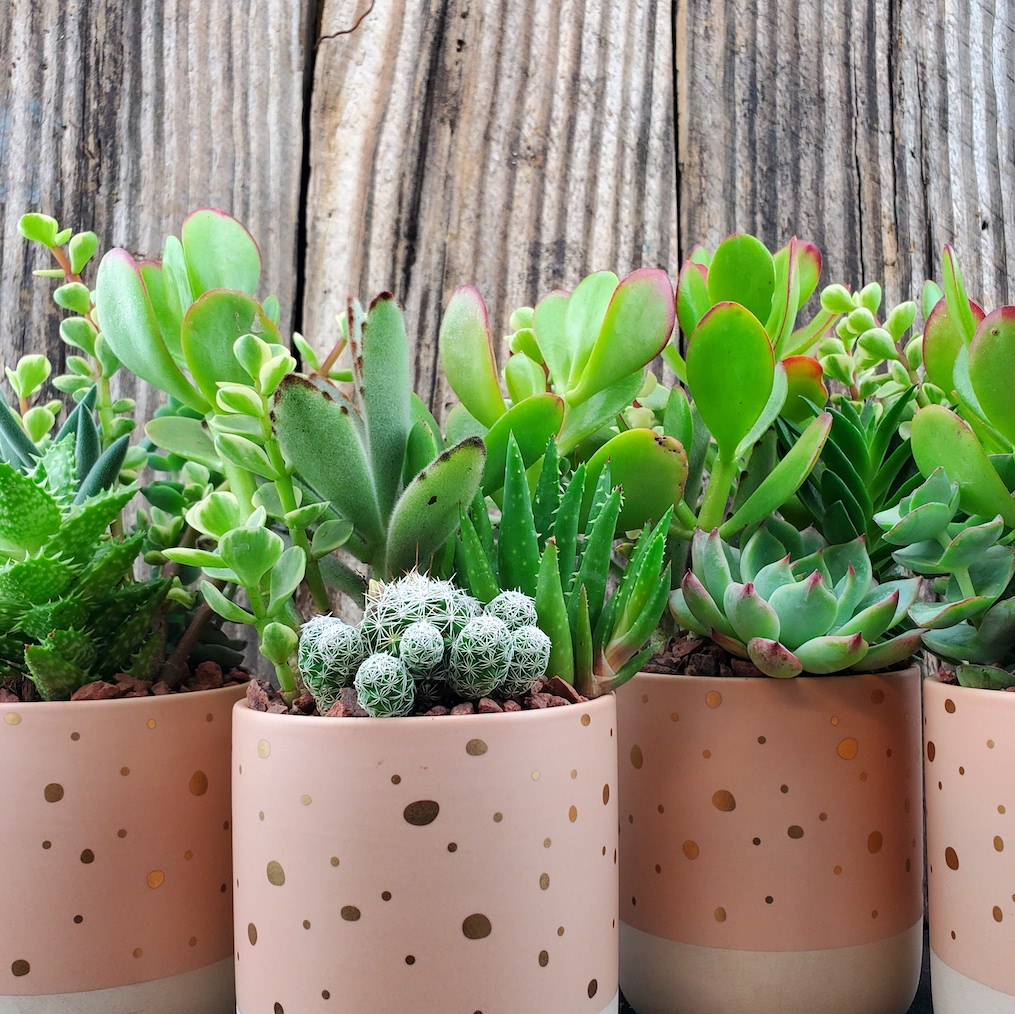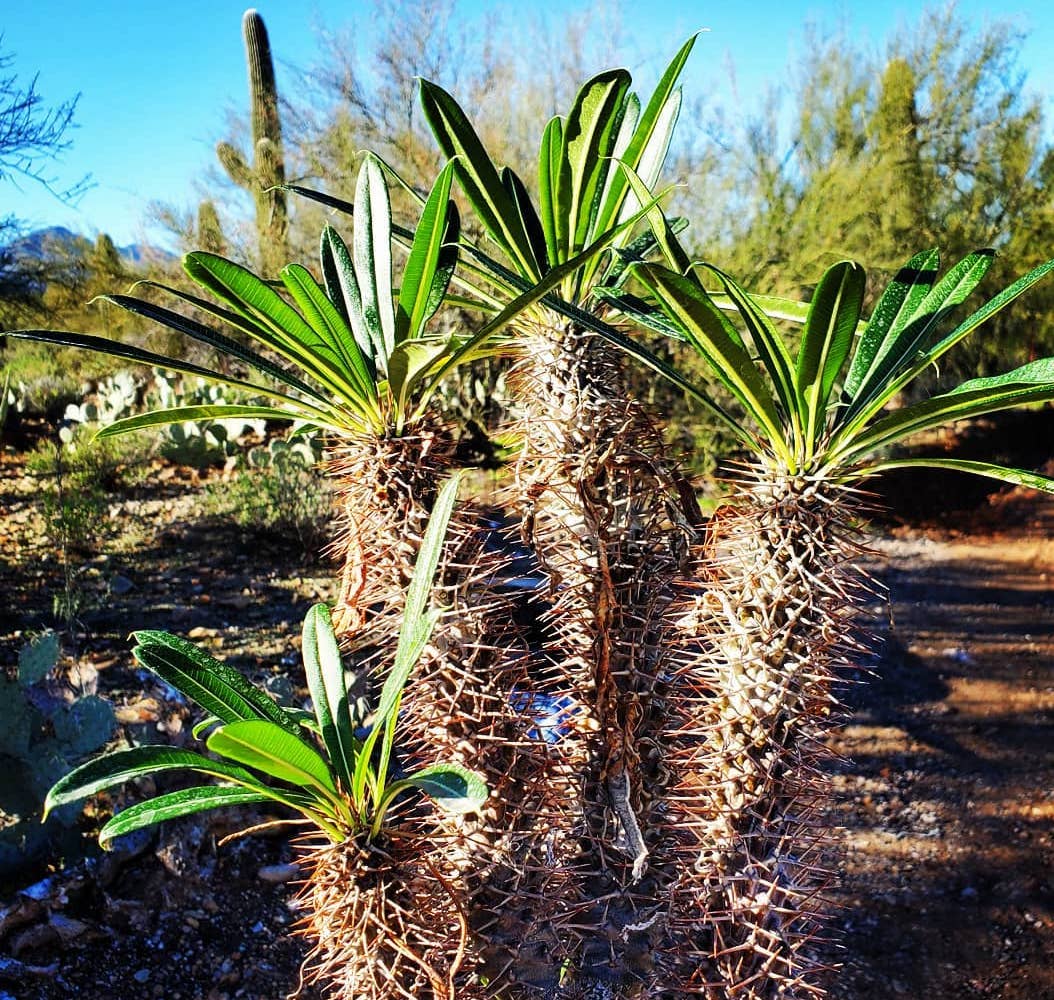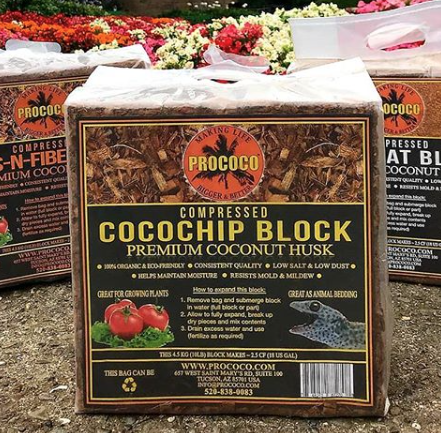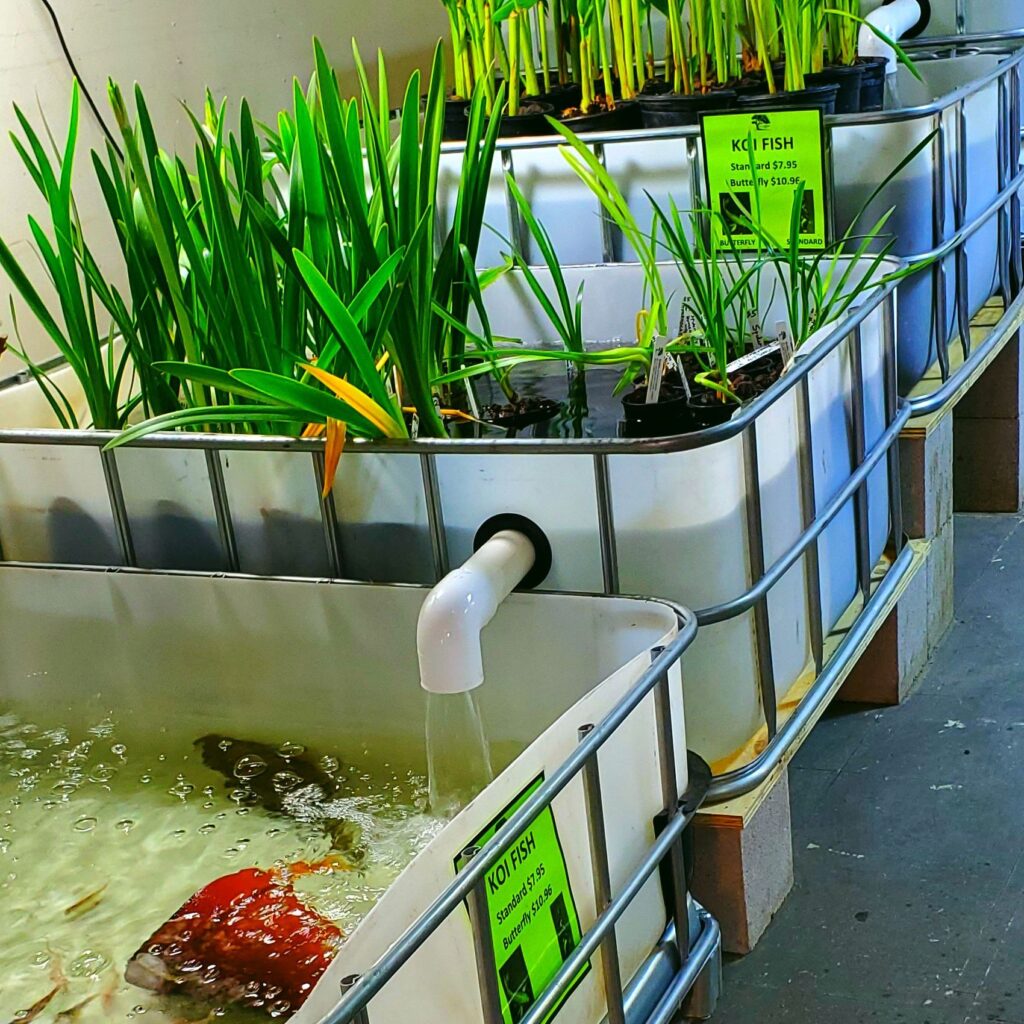EcoGro Care Sheets
FAQ
The most important rule to remember is water thoroughly. By thoroughly, water your plant until the water runs through the drain hole and out of the bottom. This will not only allow the soil to become evenly moist but also flush built up minerals and salts.
For cacti and succulents, always plant in a well-draining soil. The soil will dry out evenly between watering and not stay wet. Indoors, water your cacti and succulents once a week. Some succulents will require twice a week. Stick your finger in the soil, when it feels dry to your second knuckle, water again.
House and tropical plants will require more water. Start with twice a week and increase as need. With most house plants and tropical plants do not allow to dry out completely but also not stay waterlogged. The soil should stay slightly moist.
Refer to our care sheet section for detailed instructions.
With so many fertilizers on the market, this can get overwhelming. Follow these basic rules to simplify using your choice of fertilizers.
N-P-K stands for Nitrogen, Phosphate, and Potash. Nitrogen is “UP” which means top growth and leaf growth. Phosphate is “ALL AROUND” helping both growth, flowers, and roots. Mostly used in high amounts for buds and flowers. Potash is “DOWN” standing for root development. It is also used in high does for buds and flowers.
Generally, edibles and outdoor plants want a fairly basic N-P-K. Orchids and other blooming ornamentals prefer a higher P-K for better more flowers. House plants, cacti, and succulents want a mild formula lower in nitrogen N, but also more mild meaning lower percentages of each.
Refer to our care sheet section for detailed instructions.
With so many soils to choose, what do you do? Keep it simple and consistent.
All plants want a rich soil as well as good drainage. No plants want a soggy soil that does not dry out.
House and tropical plants do well in a rich soil that retains more water but dries out evenly and consistently. It is best to start with a high grade potting soil and amend it as necessary.
Cacti and succulents want a porous soil that drains quickly. Start out with a cacti and succulent soil. These plants want a soil that retains less water, drains very quickly, and dries out faster than others.
Use perlite or pumice for better drainage. Vermiculite will provide drainage but not as well and at a higher cost. Pumice is preferred as it does not float or break down over time. Do not use sand. Sand provides little drainage and becomes compacted over time.
Check out our Soil Mix Guide for more!
Simply put, potted plants want a lot of light but not direct sunlight. Direct sunlight can burn. House plants can easily burn so be careful. New outside plantings during the hot season can use Shade Cloth to weaken the sunlight allowing the plants to adjust. With less stress you get better growth.
Refer to our care sheet section for detailed instructions.
Yes! EcoGro carries all of the supplies you need to get your aquaponics systems running smoothly. Check out our Uniseal Instructions to help you with your set up!
Let’s discuss Decorative plantings and Gardening plantings.
With Decorative plantings you want the plant to fit and look nice. This allows you to decide on more pots and pretty gravels. Choose a pot that complements your plants in both color, type and gravel colors.
Garden plantings require pots that will permit a lot of root growth and not dry out too quickly. These generally will be larger.
Refer to our care sheet section for detailed instructions.
Trees and decorative plants need plenty of room for root growth. Dig the biggest hole you can stand to dig. Once it’s dug out, fill it with water. It needs to drain within 15 to 20 minutes. If it doesn’t, keep digging and make sure it drains. Once you have a good hole you need to put soil in it. Throw away the poor caliche desert soil and fill with good soil and compost. It will make a difference through the years.
Your potted plant should be removed from the pot. Loosen the roots at the bottom of the root mass. Put in the soil so that the plants soil level is even with the hole’s soil level.
Water right away and keep moist, not flooded, for at least one week. Remember, you want the roots to grow out from the plant so water out from the trunk. Watering next to the plant will not allow the roots to grow out. Roots will stabilize the plant and feed it.
Refer to our care sheet section for detailed instructions.
Cool season gardening is done from the Fall through early spring. Here in Arizona deserts, this begins late August through late September and ends late March to early April.
These crops will be your greens, onions, carrots, broccoli, cauliflower and many more. Most cool season crop will either not grow or go right to seed in planted when the temperatures are too high.
Refer to our care sheet section for detailed instructions.
Warm season gardening takes place Spring through Fall. In Arizona, begin planting Late March through early April and get ready to protect any remaining crops late September to early October.
Warm season crops will be tomatoes, peppers, squash, zucchini, melons, and much more. When planted too early or too late, these crops will freeze. You can extend your season by utilizing frost cloth or row cover fabric.
Refer to our care sheet section for detailed instructions.
It is best if you consult with us so that you can solve your pest problem in a environmentally friendly and efficient way. Pesticides vary based on type of pest, how they are affecting your plant, and season. For instance, neem oil kills a variety of pests but only one product kills worms and caterpillars. Neem oil, BT bacteria, and other biologicals are our main go to.
Refer to our care sheet section for detailed instructions.
Expanding a coconut husk block is easy and fast when done right.
Begin with deciding if you need the entire block or just a piece. Make sure the bucket or container you use to expand can accommodate five to six times the volume being expanded. Coconut husk blocks will expand to about 5 times their size.
Place the coconut husk in the bucket and fill with water. If a brick is put on top of the coconut husk submersing it under water, this will greatly speed up the process. Allow to sit for 10 minutes and mix around. Another few minutes of soaking and the coconut husk is ready to drain. Drain off any excess water and use. You can also leave out to dry if needed.
Refer to our care sheet section for detailed instructions.

Location:
657 W St Marys Rd, Tucson, AZ 85701
Hours: Wednesday 10AM-5PM
Thursday 10AM–5PM
Friday 10AM–5PM
Saturday 10AM–5PM
Thursday 10AM–5PM
Friday 10AM–5PM
Saturday 10AM–5PM








